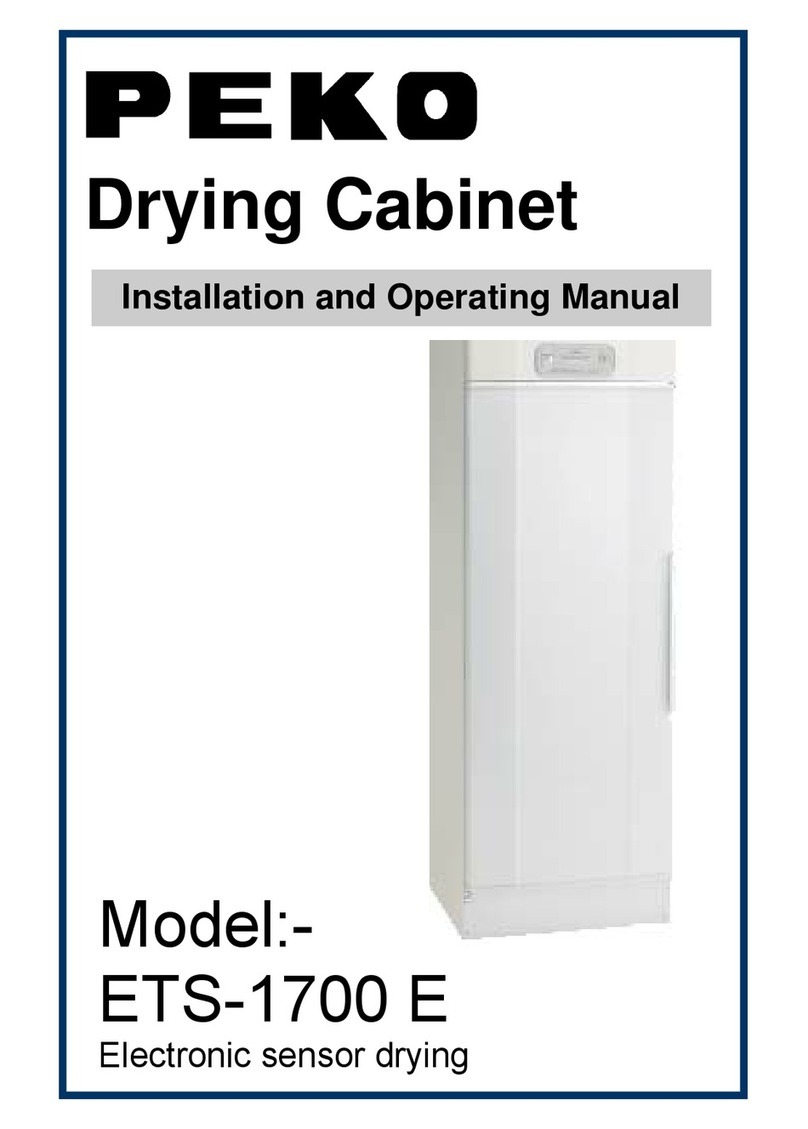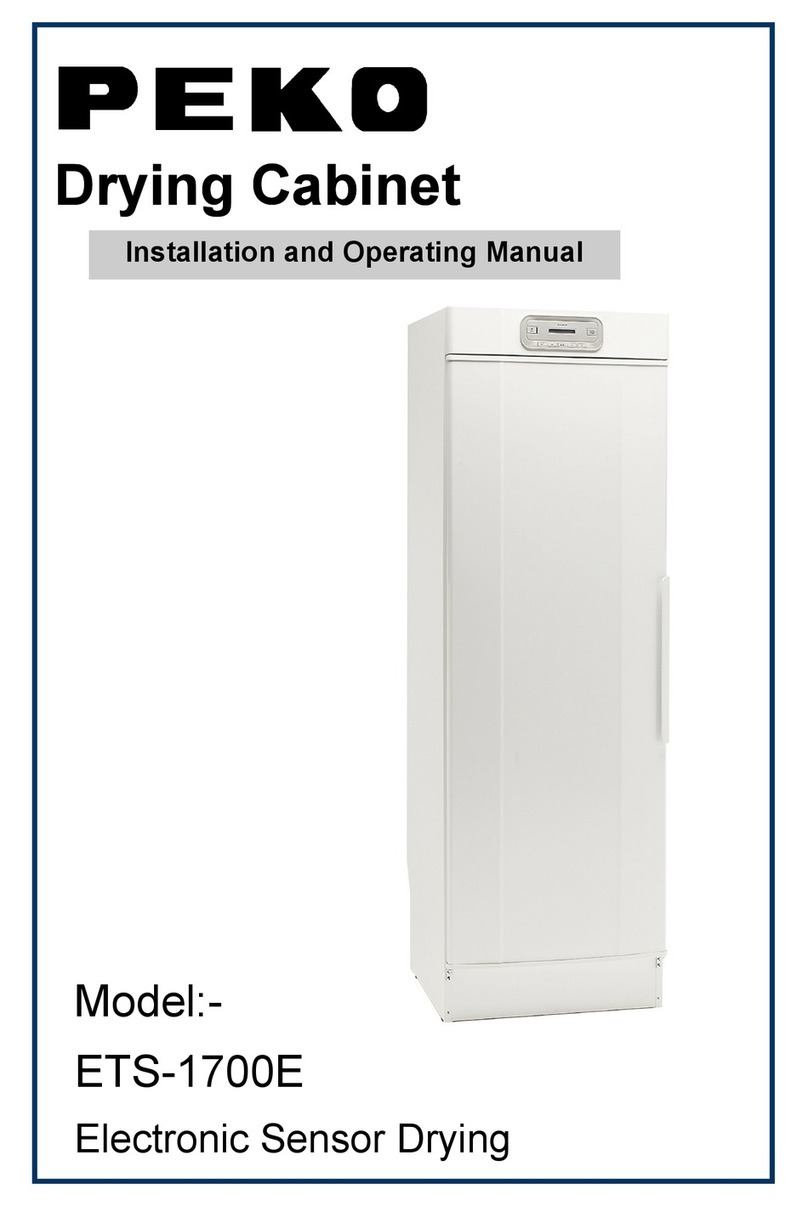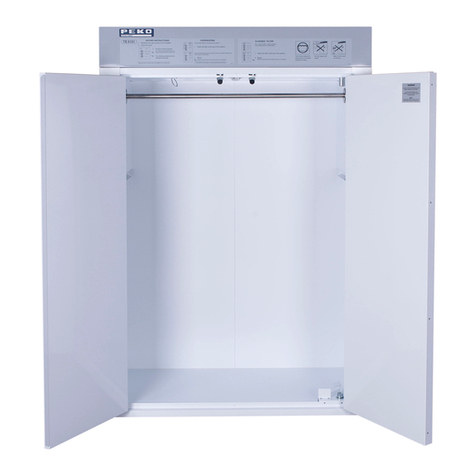
Installaon and Operang Manual Page 9
INSTALLATION
VENTILATION / EXTRACTION SYSTEMS
To prevent the build-up of heat and moisture within the room, it
is recommended that a ventilation system is connected to the
cabinet. This can generally be achieved by using one of the
two options detailed below.
Requirements for all installations: Fit the spigot adaptor (1) to
the top of the cabinet by placing it over the cut-out and rotating
clockwise until the lugs of the spigot click into place.
The cabinet requires an optimum airflow of 95m3 per hour.
The location of the cabinet must ensure that replacement air is taken into consideration, especially in a
closet installation or where the cabinet is built-in to bespoke cupboard furniture.
1. CONNECTION TO AN EXISTING MECHANICAL SYSTEM
(Existing air conditioning / climate control system)*
This method is only suitable for buildings that have an existing
mechanical ventilation system, or where the room has a
dedicated extraction fan with a capacity of at least 95m3 /
hour. In both cases, the ducting must terminate to outside
atmosphere.
Fit the supplied white plastic ventilation adaptor (3) over the
existing wall or ceiling mounted extractor fan grille (fixing
screws for this ‘tripod’ type fitting are not supplied). This fitting
allows for both room and cabinet ventilation. Connect to the
cabinet outlet spigot with the flexible hose or other appropriate
ducting material.
*Please consult with a ventilation engineer before connecting the cabinet to a centralised building
ventilation system.
NOTE. The exhaust ducting should not be
connected into an existing chimney, boiler flue
or tumble dryer system.
2. CONNECTION TO A NATURALLY ASPIRATED SYSTEM
(Direct ducting system to outside air)
This is the preferred method of providing ventilation for the
cabinet. The ducting can be routed through an outside wall
or glazed window pane. Core cut a 105mm. diameter hole in
the outside wall, or alternatively cut a hole in a fixed pane of
window glass. Connect the flexible hose (2) to the cabinet. A
coupling fitting (4, not supplied) may be required to adapt to
the terminal fitting or ducting. Fixed open louvre fittings are
preferred complete with an integral insect mesh screen. The
ducting can also be installed with a vertical duct pipe termi-
nating on the roof.
Additional guidance notes on page 10.































